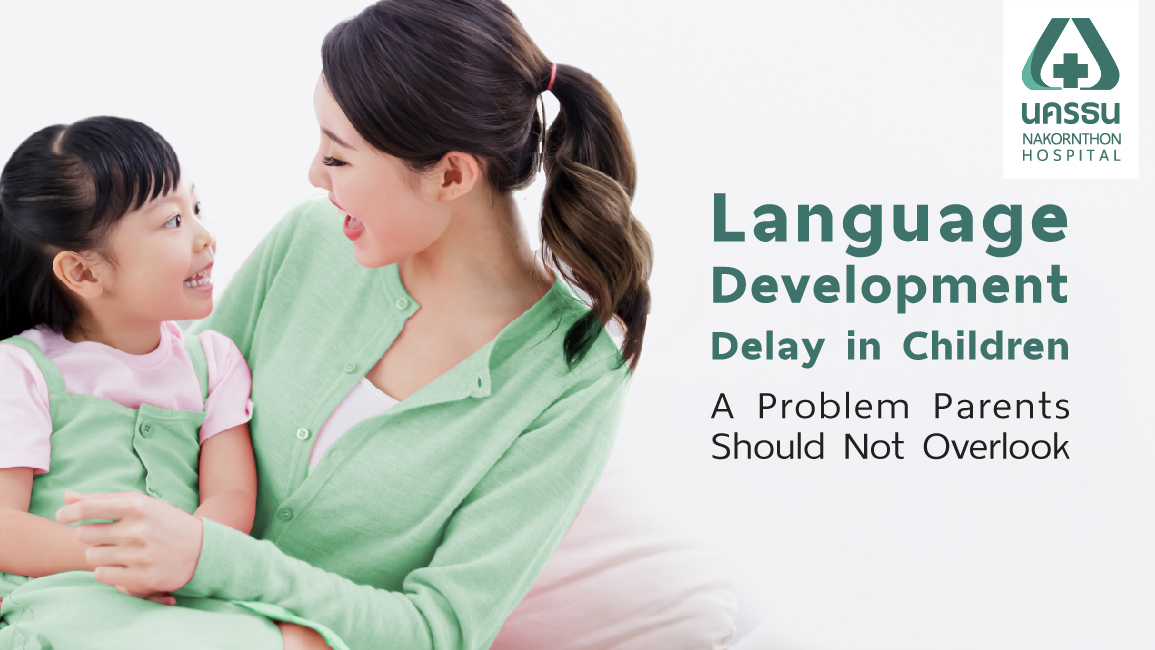Language Development Delay in Children: A Problem Parents Should Not Overlook
Center : Children Health Center

At present, a significant number of children experience language development delays (commonly referred to as “late talkers”). Studies show that approximately 10–15% of 2-year-olds, 5% of preschool children, and 6–8% of school-aged children have delayed language development.
If left untreated, this condition can lead to long-term consequences such as learning difficulties (especially in reading), as well as emotional and behavioral problems. Therefore, children with language delays should receive early diagnosis and intervention to help enhance their communication skills and reach their full potential.
Table of Contents
Signs That May Indicate a Language Development Delay
Children showing the following signs should be evaluated by a specialist to determine the cause and receive proper care:
| Age | Language Development Behavior |
|---|---|
| Newborn – 4 months | Does not respond to sounds when awake and alert |
| 5 – 7 months | Makes few sounds or does not coo or babble in response to caregivers |
| 9 – 12 months | Does not turn toward sounds or imitate consonant sounds other than “ah” |
| 15 months | Cannot say at least one meaningful word |
| 18 months | Does not understand or follow simple instructions; cannot say at least three meaningful words |
| 2 years | Cannot combine two different meaningful words; speaks fewer than 50 words |
| 2½ years | Does not use short phrases of 3–4 words; speech is still unclear or nonverbal |
| 3 years | Cannot form complete sentences; speech is mostly unintelligible to others |
| 4 years | Unable to tell short stories; speech remains unclear to others more than 25% of the time |
Risk Factors Contributing to Language Development Delay
Biological Factors
- Mother’s illness during pregnancy or exposure to substances harmful to the baby, such as alcohol or drugs
- Birth complications, including lack of oxygen, premature birth, low birth weight, or severe illness
- Family history of developmental disorders such as delayed speech or intellectual disability
Environmental Factors
- Medical conditions affecting the brain, such as seizures or loss of consciousness
- Nutritional deficiencies, especially iodine or iron deficiency
- Exposure to toxins affecting brain development, such as drugs, lead, or arsenic
- Inappropriate caregiving environment — for example, allowing screen time (TV, tablets) before age 3, or limited caregiver interaction

How to Support a Child with Language Development Delay
- Speak clearly and serve as a good language model for your child.
- Talk about things that capture your child’s attention, and encourage them to follow simple commands. If they don’t understand, guide them by helping physically while repeating the command.
- Encourage your child to speak in different situations.
- If your child is not yet speaking words, emphasize single words (e.g., “milk,” “cat”). When they imitate but mispronounce, repeat the word clearly as a model.
- If your child uses gestures to express needs, prompt them to vocalize words before responding.
- Once your child can say several single words, help them combine words into short phrases or sentences (e.g., “drink water,” “I want milk”).
- Helpful Technique
- Use open-ended questions such as “What is this?”, “What are you doing?”, “Where is it?”, “What is it for?”, or “What happens next?”
- Be a good listener — maintain eye contact, respond gently, and ask focused questions if your child struggles to answer.
- Expand on your child’s responses by turning them into complete sentences, and give positive reinforcement when they try to communicate.
- Promote language learning through activities like reading storybooks and looking at pictures together.
- Reduce passive one-way communication, such as time spent watching TV, tablets, or smartphones.
Free Online Consultation
Article of Children Health Center
Language Development Delay in Children: A Problem Parents Should Not Overlook





